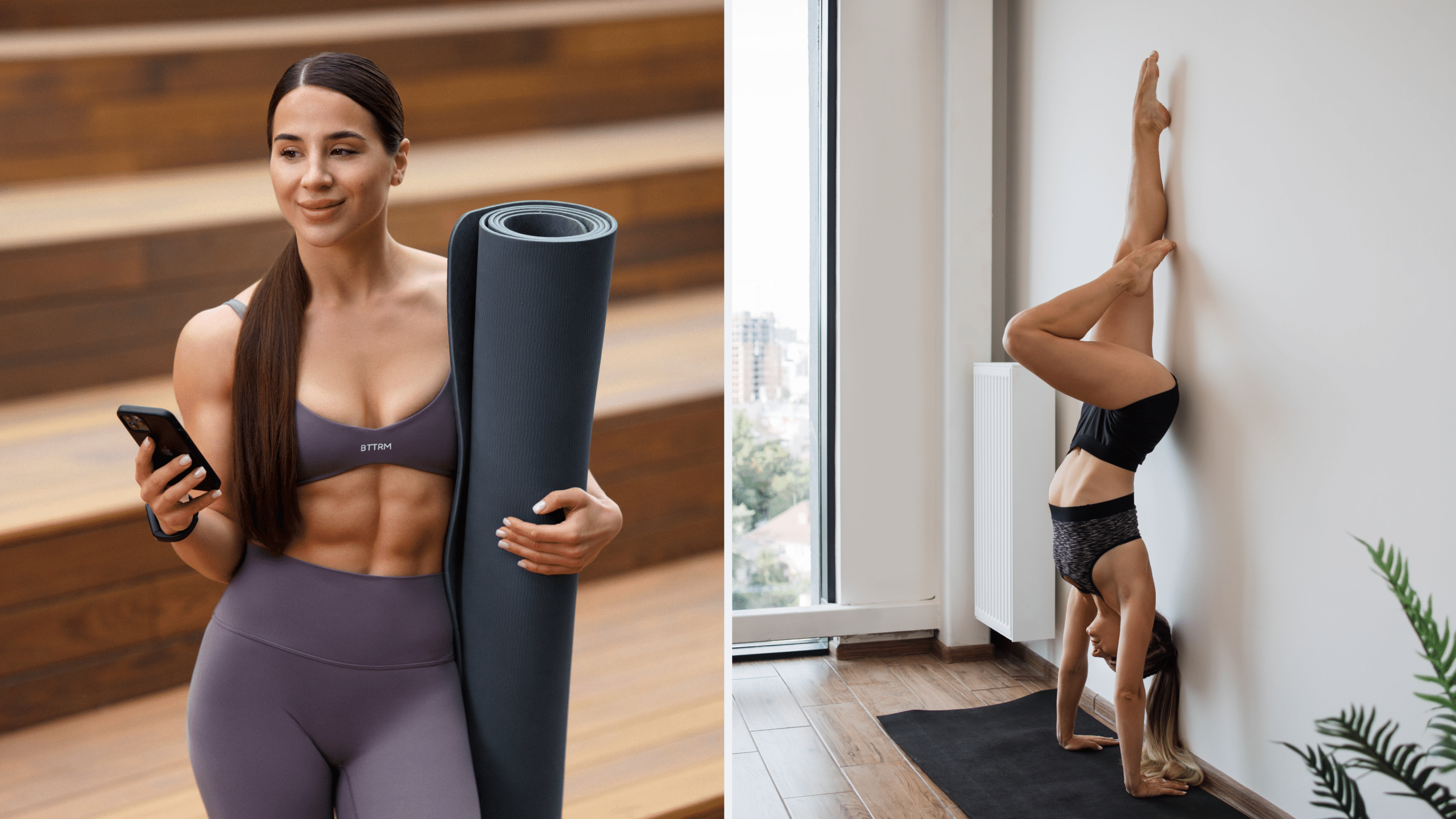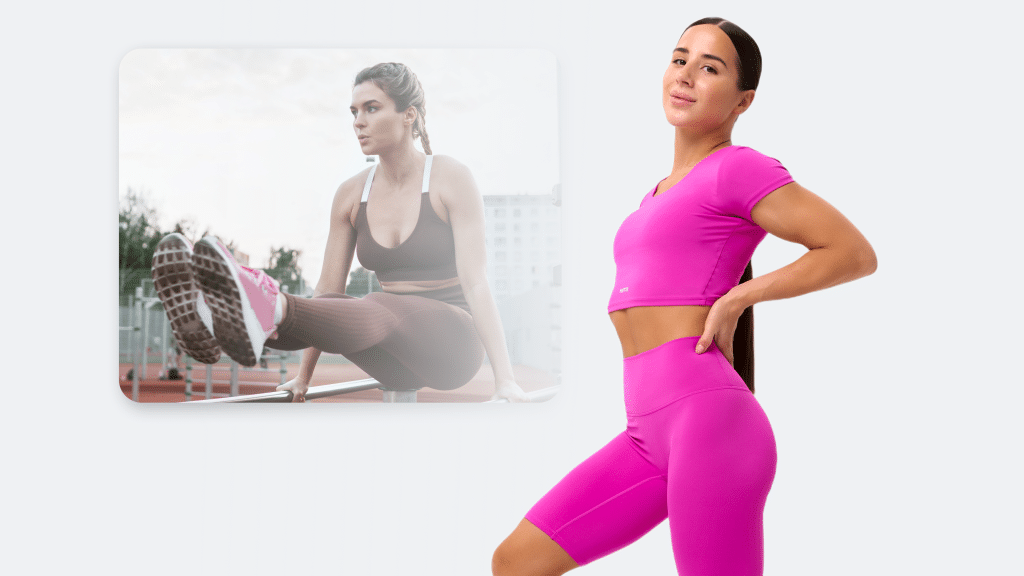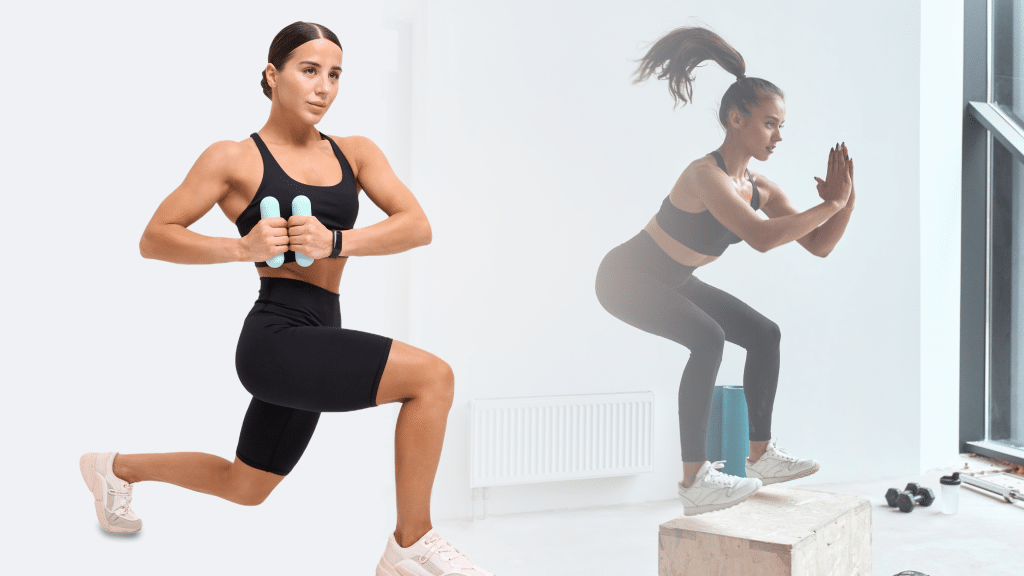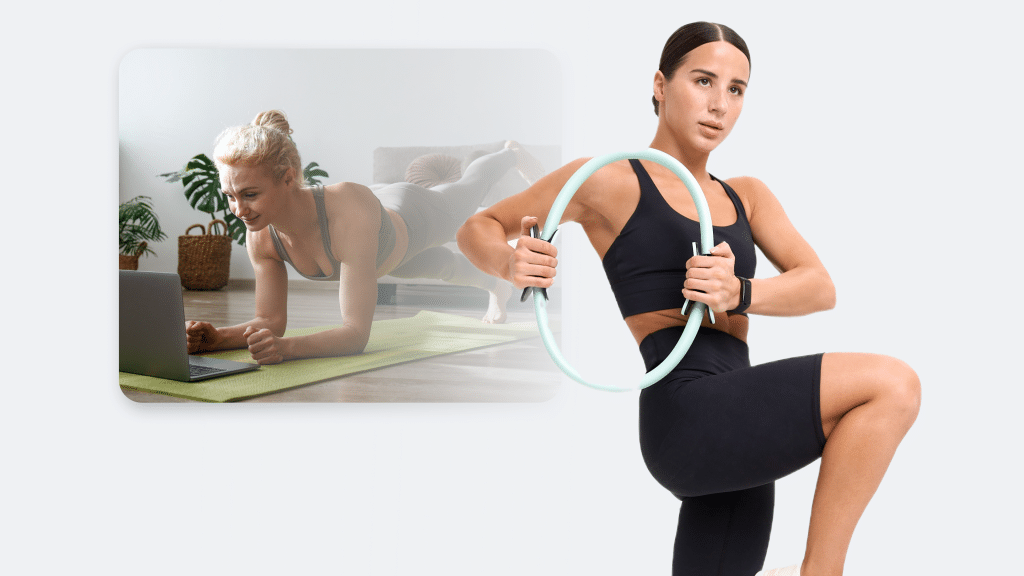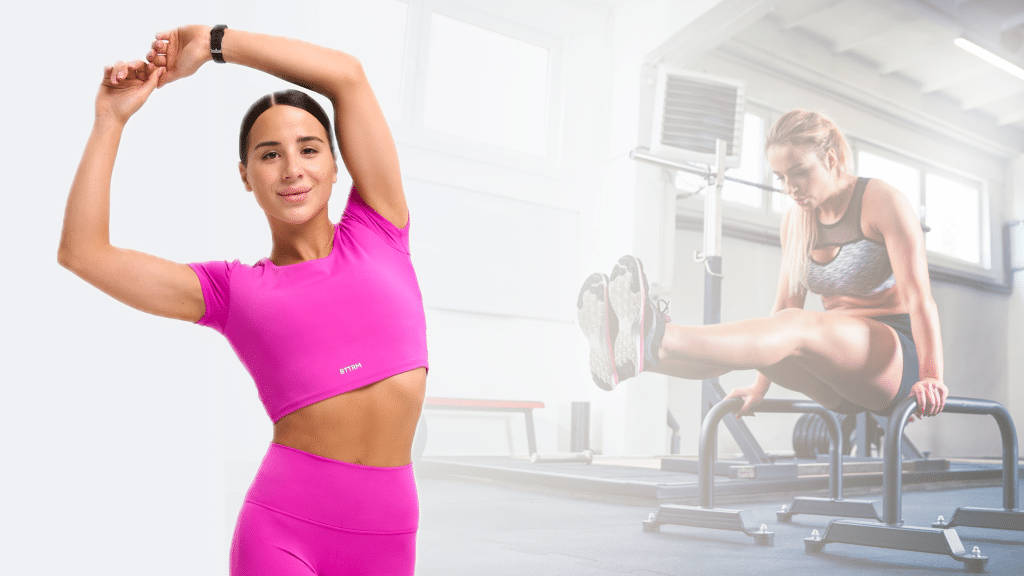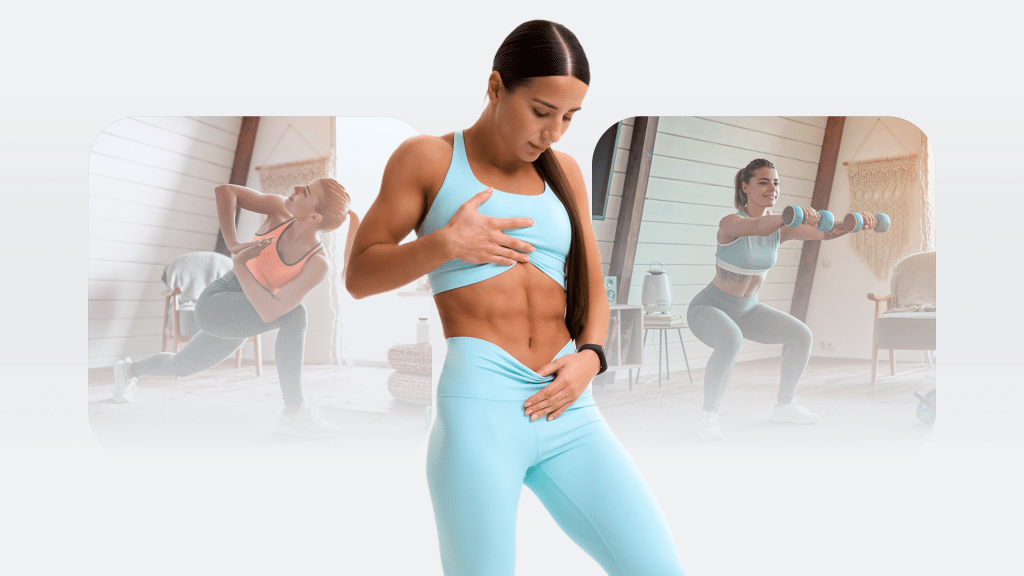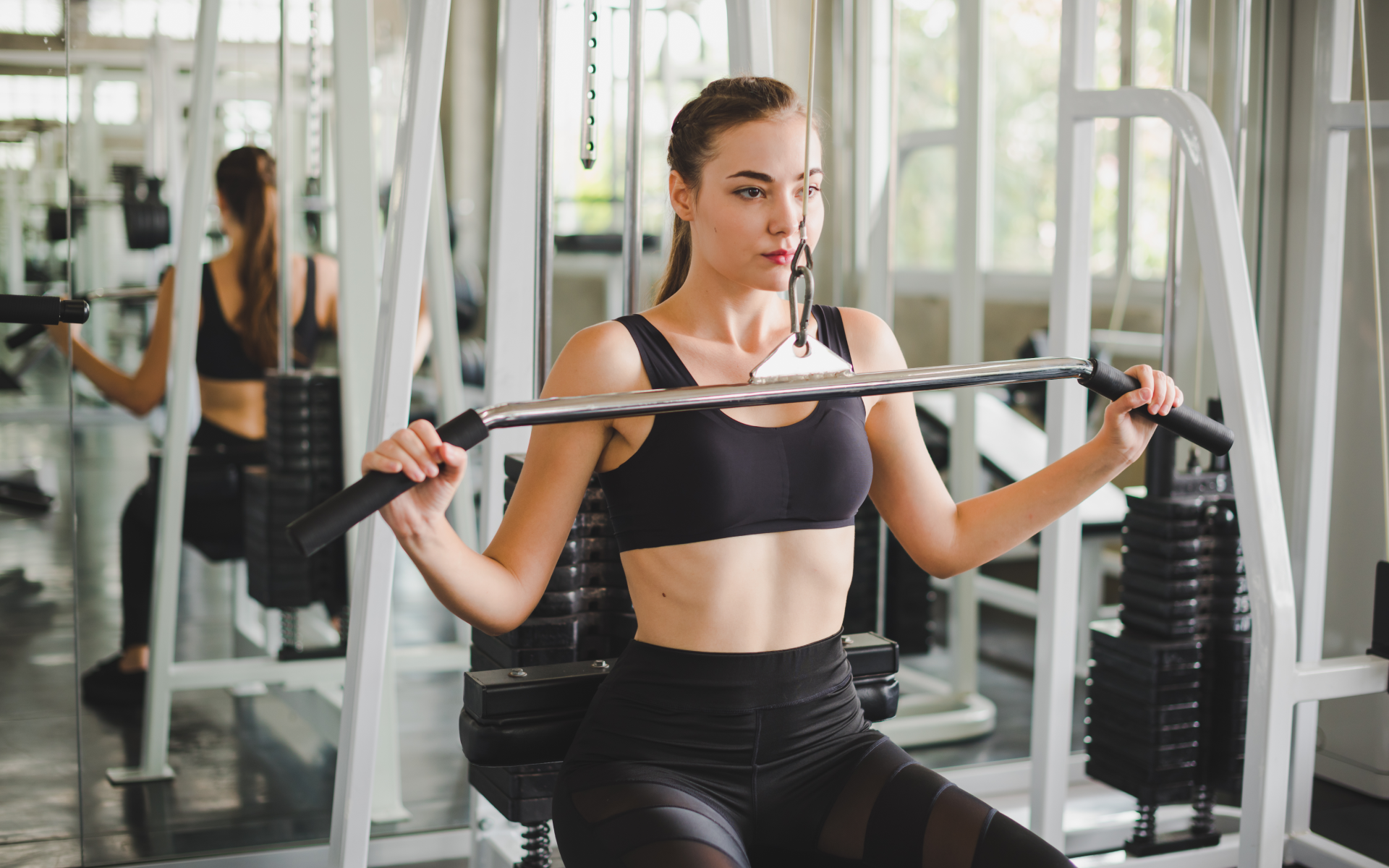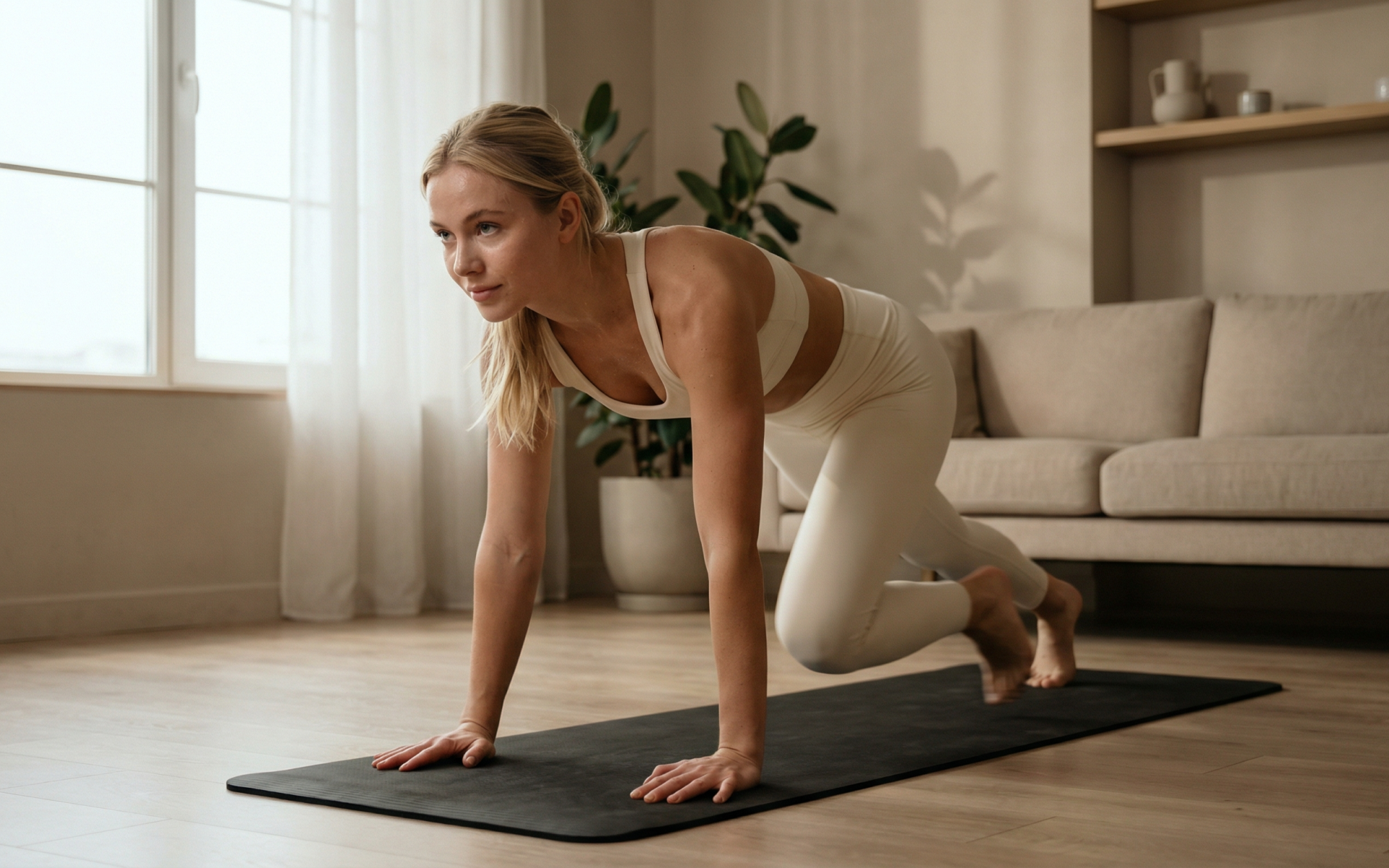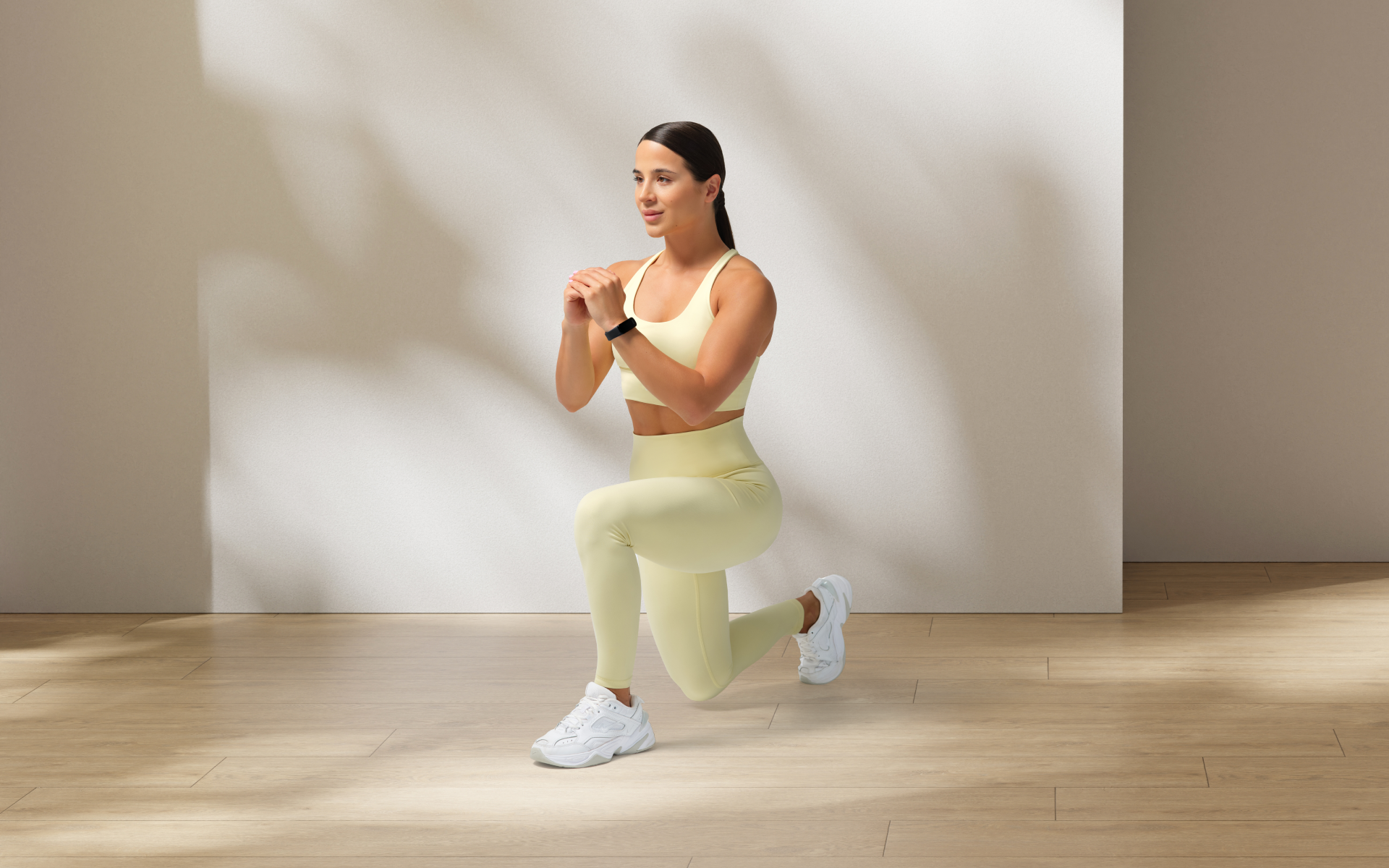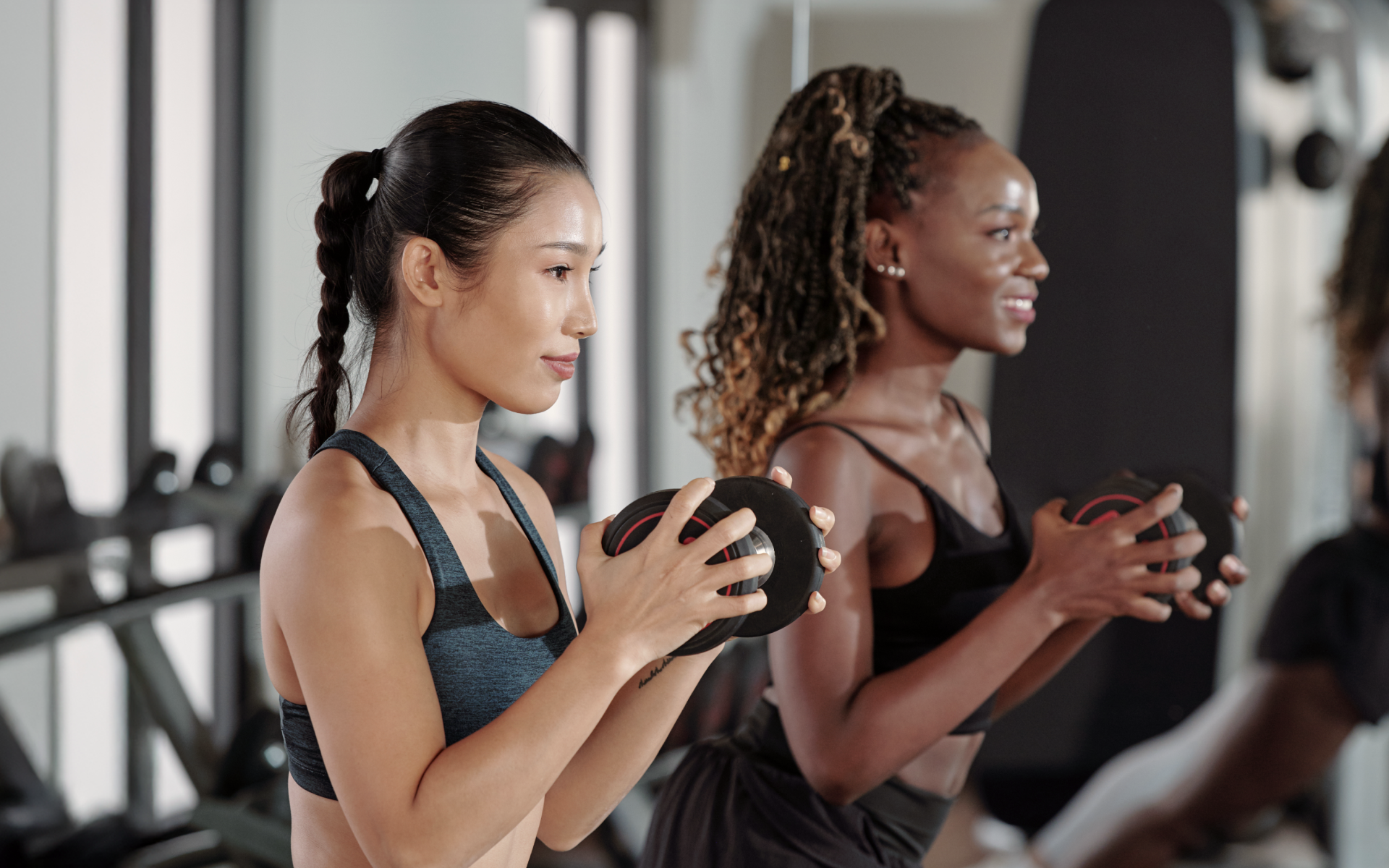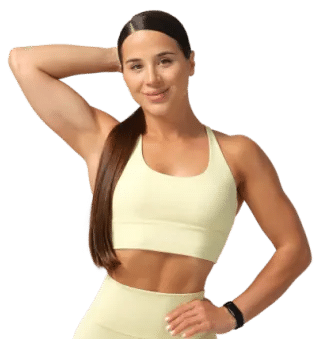Calisthenics poses are a great way to build strength, flexibility, and body control without needing equipment or a gym membership. Whether a beginner or an advanced athlete, calisthenics progressions help you gradually increase difficulty and intensity to reach your goals.
From foundational exercises like push-ups and squats to advanced movements like the planche and muscle-up, keep reading as we explore the essential exercises and how to progress through them for the best results.
What Are the Best Calisthenics Poses?
The best calisthenics exercises for you will depend on your fitness level, age, weight, and overall goals. There are many exercises to choose from that will help you target muscle groups in different parts of the body, and once you determine which parts need the most work, it will be easier to choose the best ones.
You can also modify most exercises to make them easier or more challenging to get the best workout. All without using weights(1).
The most popular choices include:
- Push-ups
- Pull-ups
- Planks
- Squats
- Lunges
- Handstands
- Dips
How to Learn Calisthenics Poses?
Learning the basic calisthenic exercises is easy because the poses follow the body’s natural movements.
Begin with foundational exercises like push-ups, squats, lunges, and planks to help you build the strength and body control needed for more advanced poses.
Proper form is essential to prevent injury, so spend time learning to do the exercises correctly and use a mirror or have someone watch over you to ensure you do them correctly(2).
The BetterMe: Health Coaching app will provide you with a host of fat-frying fitness routines that’ll scare the extra pounds away and turn your body into a masterpiece! Get your life moving in the right direction with BetterMe!
What Are the 4 Pillars of Calisthenics?
The four pillars of calisthenics refer to the fundamental movement patterns that form the basis of bodyweight training.
These movements target different muscle groups and are essential for developing:
- Strength
- Balance
- Overall fitness
The four pillars are push, pull, squat, and core (3).
They make up the foundation of calisthenics skills for beginners, a great place to focus.
Push
Working on the push pillar involves pushing your body away from the ground or a bar, engaging the chest, shoulders, and triceps.
Examples: push-ups and dips.
Pull
Pulling exercises involve pulling your body toward an object, and they will work your back and biceps.
Examples: pull-ups, chin-ups, and reverse rows.
Squat
Squatting movements target the legs, particularly the quads, hamstrings, and glutes.
Examples: bodyweight squats, pistol squats, and lunges.
Core
Core exercises focus on stabilizing and strengthening the muscles around the midsection.
Examples: planks, leg raises, and various crunches.
What Is the Easiest Calisthenics Pose?
The easiest standard calisthenics pose is likely the plank.
It’s a basic bodyweight exercise focusing on core strength and maintaining stability over time. It’s a foundational, easy-to-learn calisthenics exercise requiring no equipment or movement.
Several modified poses can be as easy or easier than the plank, including:
- Knee planks
- Wall push-ups
- Chair squats(4).
Read more: Calisthenics Vs Weights: Which Road Should You Go Down?
What Is the Hardest Pose in Calisthenics?
Many calisthenic exercises can be strenuous for even skilled athletes. However, the planche is incredibly challenging.
It requires lots of upper body and core strength to maintain balance and control while holding your entire body parallel to the ground, supported only by your hands, with no other contact points.
Other challenging poses in calisthenics include:
- One-arm pull-up
- Human flag
- Muscle up(5).
What Are Some Calisthenics Goals?
Mastering Fundamental Movements
An excellent early goal when getting started with calisthenics is to master the fundamental movements like push-ups, pull-ups, squats, and dips, which will help you build the strength you need to do more complex exercises.
Increasing Repetitions
Once you learn the movements, a common goal is to gradually increase the number of repetitions, which will help build endurance and muscular stamina.
Implement More Difficult Exercises
As their workout becomes easier, even with plenty of repetitions, many people will aim to incorporate more difficult exercises into their routine.
Advanced calisthenics movements can include:
- Handstand
- Front lever
- Pistol squat
Develop a Routine
An effective calisthenics routine will consist of learning exercises, increasing the number of repetitions, and incorporating more difficult movements through progressive overload.
Your routine should feel balanced and fit right into your responsibilities and priorities, such as job, school, or family schedules.
Look at your calendar, block the time off, and reschedule your workouts when needed.
Having a reasonable routine makes it easier to stick with your workouts and make steady progress toward your goals.
Consistency is a key part of any workout plan and should be a primary goal.
BetterMe: Health Coaching app helps you achieve your body goals with ease and efficiency by helping to choose proper meal plans and effective workouts. Start using our app and you will see good results in a short time.
Calisthenics Moves Ranked by Difficulty
Calisthenics Poses for Beginners
- Plank
- Lie face down with your forearms on the ground and your elbows under your shoulders.
- Lift yourself off the ground and support yourself on your forearms and toes.
- Your body should form a straight line from head to foot without sagging or arching.
- Hold the position for 10 seconds before releasing it to the floor.
- Increase the amount of time you hold the pose as you are capable.
- Push-Ups
- Start in a plank position, but raise your body and support yourself on your palms with your hands slightly wider than shoulder width.
- Lower your body by bending your elbows, keeping your body in a straight line.
- Go down until your chest is just above the ground.
- Push back up to the starting position by straightening your arms.
- Repeat for the desired number of reps.
- Bodyweight Squats
- Stand with your feet shoulder-width apart and your toes pointed slightly outward.
- Bend your knees to lower your body as if you were sitting in a chair.
- Lower your body until your thighs are parallel to the ground.
- Press to stand up, keeping your knees behind your toes.
- Repeat for the desired number of reps.
Read more: Calisthenics Vs Weights: Which Road Should You Go Down?
Intermediate-Level Calisthenic Poses
- Pull-Ups
- Grab a pull-up bar with your palms facing away from you and your hands slightly wider than shoulder-width apart.
- Raise your chest toward the bar using your back and biceps until your chin is above the bar.
- Slowly lower yourself back to the starting position.
- Repeat for the desired number of reps.
- Pistol Squats
- Stand on one leg with the other leg extended in front of you.
- Bend the knee of your standing leg to lower your body as low as you can or until your thigh is parallel to the floor.
- Press into your standing leg to stand up, keeping your knee behind your toes.
- Repeat for the desired number of reps.
- Dips
- Grip parallel bars with your arms straight and your body off the ground.
- Bend your elbows to lower your body, keeping them close to your body.
- Lower yourself until your upper arms are parallel to the ground.
- Push back up to straighten your arms and return to the starting position.
- Repeat for the desired number of reps.
Advanced Level
- One-Arm Push-Ups
- Start in a standard push-up position with your feet spread further apart for better balance.
- Place one hand under your shoulder and tuck the other behind your back.
- Lower yourself slowly by bending your elbow and keeping your body straight.
- Lower yourself as far as possible until your upper arm is parallel to the ground.
- Push back up to return to the starting position.
- Repeat for the desired number of reps.
- Muscle-Up
- Start with a firm grip on a pull-up bar, hands shoulder-width apart, and palms facing away.
- Pull your chest toward the bar like you do for a pull-up, but more explosively, to get your chest above the bar.
- Transition quickly into a dip position by leaning over the bar and pulling your shoulders back.
- Press up by straightening your arms to complete the dip.
- Lower yourself back down to the starting position in a controlled manner by reversing the steps.
- Repeat for the desired number of reps.
- Planche
- Start in a push-up position with your arms straight and your hands shoulder-width apart.
- Lean forward by shifting your weight onto your hands, keeping your body straight.
- Lift your feet off the ground by engaging your core, glutes, and shoulders.
- Hold your body parallel to the ground, supporting yourself only with your hands for as long as possible.
- Repeat for 3 – 5 repetitions.
Calisthenics Workout Plan for Beginners at Home
Warm Up
To begin a calisthenics workout at home as a beginner, start with a 5–10-minute warm-up to get your blood flowing and muscles ready for exercise.
Jumping jacks, arm circles, and leg swings are all great options.
Calisthenics Moves
Aim for three rounds of the exercise routine and add more rounds as needed, with 60 – 90 seconds of rest between each exercise.
Focus on exercises that target different muscle groups to get a total-body workout.
For instance, you can begin with push-ups and move on to squats, followed by dips, before ending with pull-ups.
Many calisthenics exercises can be difficult, especially for beginners, because they require you to move your entire body weight, unlike weightlifting, which allows you to start with a lighter weight and add to it in small increments. However, most exercises have modifications that make them easier to perform, like knee planks that are easier than standard planks(7). While it’s hard to say whether calisthenics is the healthiest form of exercise because everyone has different fitness needs, they rank highly. These exercises build strength, improve cardiovascular health, enhance mobility, and promote weight loss while remaining low-impact and easy on the joints. Calisthenics is easy to scale to all fitness levels, and you can do them anywhere since they don’t require any equipment, making them an excellent choice for people of all ages(8). Whether calisthenics is more demanding than the gym will depend on your specific fitness level, goals, and the exercises you are comparing. Calisthenics requires more body control, balance, and coordination, especially when performing more challenging exercises like the planche. In contrast, lifting heavier weights can be very taxing on muscles, joints, and the nervous system without proper rest periods in between (9). Yes. Calisthenics is a form of training that requires the accumulation of many skills. It requires developing specific skills involving body control, balance, and technique. Like learning a new sport or musical instrument, calisthenics movements require practice. For instance, achieving the muscle-up involves breaking down the muscles and movements into manageable components. Work on and master the components separately, then combine them into a single fluid movement.Frequently Asked Questions
Why calisthenics is so hard?
Are calisthenics the healthiest?
Is calisthenics tougher than gym?
Is calisthenics a skill?
The Bottom Line
Mastering calisthenics poses is a journey that can take time but provides endless possibilities for improving strength, promoting weight loss, and improving cardiovascular health.
Start with the fundamental exercises, like the plank and squat, if you are new to calisthenics, and move on to more challenging exercises as you are capable. Remember to focus on form to maximize your workout and reduce the risk of injury.
You can develop a comprehensive fitness routine that targets all major muscle groups by incorporating proper form, technique, and consistent progressions.
DISCLAIMER:
This article is intended for general informational purposes only and does not serve to address individual circumstances. It is not a substitute for professional advice or help and should not be relied on for making any kind of decision-making. Any action taken as a direct or indirect result of the information in this article is entirely at your own risk and is your sole responsibility.
BetterMe, its content staff, and its medical advisors accept no responsibility for inaccuracies, errors, misstatements, inconsistencies, or omissions and specifically disclaim any liability, loss or risk, personal, professional or otherwise, which may be incurred as a consequence, directly or indirectly, of the use and/or application of any content.
You should always seek the advice of your physician or other qualified health provider with any questions you may have regarding a medical condition or your specific situation. Never disregard professional medical advice or delay seeking it because of BetterMe content. If you suspect or think you may have a medical emergency, call your doctor.
SOURCES:
- The best calisthenics workout plan for all fitness levels (medicalnewstoday.com)(medicalnewstoday.com, 2021)
- An Intro to Calisthenics for Beginners With a 30-Day Workout Plan – BetterMe(betterme.world, 2024)
- Calisthenics: What It Is and How to Start (health.com)(health.com, 2023)
- Plank Exercises: What They Do For Your Body (clevelandclinic.org)(clevelandclinic.org, 2021)
- 7 Steps to Master the Planche – Calisthenics Worldwide(calisthenicsworldwide.com, 2021)
- Basic Calisthenics Workout: A Comprehensive Guide for Beginners – BetterMe(betterme.world, 2024)
- Calisthenics: What it is, how to do it, exercises, and more (medicalnewstoday.com)(medicalnewstoday, 2020)
- 5 Calisthenics To Try (clevelandclinic.org)(health.clevelandclinic.org, 2022)
- Effects of aerobic and/or resistance training on body mass and fat mass in overweight or obese adults – PMC (nih.gov)(nih.gov, 2012)
